Homeowners want to cut energy use and lower bills. Using natural light is a great way to do this. Daylighting uses windows and skylights to bring sunlight inside. This cuts down on artificial lighting and saves energy.
By using passive solar design and sustainable architecture, you can make your home energy-efficient. This means using sunlight, a free resource, to your advantage.
Studies show daylighting can save up to 75 percent of lighting energy. But, we don’t use natural light enough in building design or laws. To get the most from daylighting, start thinking about it when designing buildings.
Companies like Danpal® have tools for lighting and solar energy. They use 30 years of experience in daylight design. Architects can use these tools to plan for energy efficiency and comfort early on.
Natural light can really cut energy use. Apartments with more natural light use 20% less energy. Just opening blinds or curtains can save 10% a month on electricity bills.
Placing mirrors to reflect light can add up to 30% more light. Moving furniture to let in sunlight can also save energy. Adding energy-efficient lights like LED bulbs can cut electricity use by 50% and last longer.
Key Takeaways
- Daylighting can save up to 75% of the energy used for lighting buildings
- Integrating daylighting from the initial stages of building design is crucial
- Apartments designed for natural light can reduce energy consumption by 20%
- Opening curtains and strategically placing mirrors can decrease electricity costs
- LED bulbs can further reduce electricity usage and last longer than incandescent bulbs
Understanding the Benefits of Daylighting
Daylighting uses natural light to brighten indoor spaces. It’s great for homeowners wanting to use green building strategies. Sunlight makes your home cozy and inviting. It also cuts down on energy use and bills. Adding daylighting to your home is a step towards a net-zero energy home.
Reducing Energy Consumption and Costs
Daylighting is great for cutting down energy use and bills. Lighting uses a lot of energy in buildings. By using daylight, you can use less artificial light. Windows and skylights bring in natural light and keep your home warm in the cold months.
Studies say daylighting can save 15 to 40 percent of energy. It uses less energy than artificial lights and helps with heating costs. Stores like Wal-Mart sell more in well-lit areas, showing daylighting’s benefits.
Enhancing Home Comfort and Ambiance
Daylighting makes your home feel warm and welcoming. It makes spaces brighter and more comfortable. Being in natural light is good for your health. It helps with mood, work, and sleep.
“Lighting affects our well-being in a variety of ways. A better understanding of the psychological processes involved can help lighting professionals develop more effective lighting solutions.” – Jennifer A. Veitch, Ph.D., National Research Council of Canada
Students in well-lit classrooms do better in math and reading. Daylighting in your home makes it nicer and more productive for your family.
Using natural sunlight is good for the planet and your health. By using daylight and smart lighting, you can make your home sustainable and cozy. Enjoy the benefits of natural light while helping the environment.
Assessing Your Home’s Natural Lighting Potential
Before you start, check how much natural light your home gets. This is key to using daylight well. Think about your climate and your home’s design to make smart choices. This way, you can use natural light more and use less artificial light.
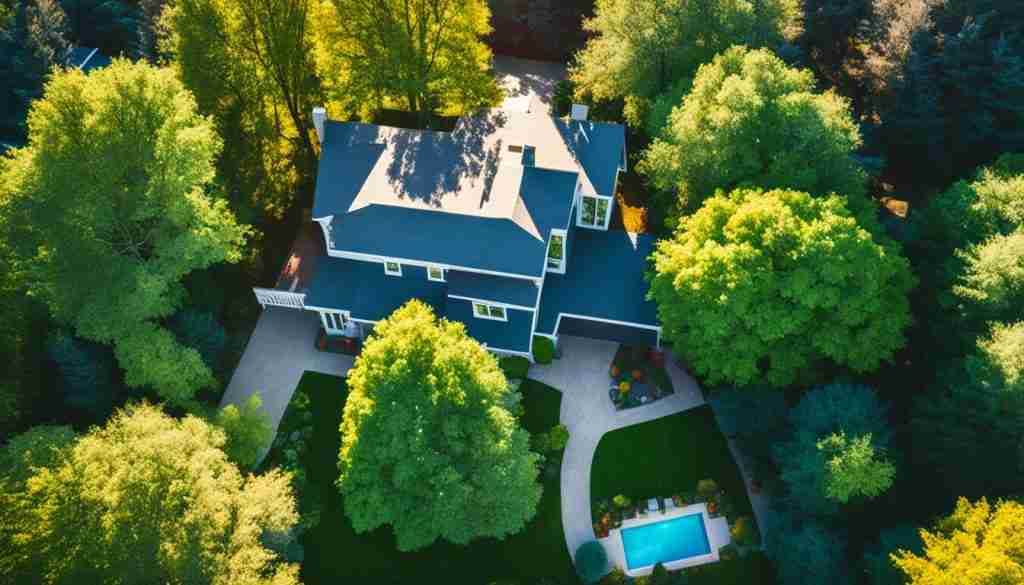
Here are important things to consider when checking your home’s daylighting:
- Windows should face south to get enough sunlight in winter and less in summer. This helps control the temperature inside your home.
- Make sure nothing blocks sunlight coming into your windows. You might need to trim trees or move furniture.
- Look at your windows’ solar heat gain coefficient (SHGC). A lower SHGC means less heat in the summer, which can save on cooling costs.
According to Sustainable Home Magazine, 34% of the energy used in the average U.S. home goes to heating, cooling, and lighting. Using your home’s natural light well can cut down on energy use and costs.
For a full picture of your home’s energy use, think about getting a professional energy audit. These audits take 2 to 3 hours and show you how to save energy. They cover lighting, insulation, and appliances. Following their advice can cut your energy bills by up to 50%.
| Energy-Saving Strategy | Potential Savings |
|---|---|
| Upgrading to LED bulbs | Up to 90% less power consumption compared to incandescent bulbs |
| Installing ENERGY STAR certified appliances | Up to 50% savings on heating and cooling energy usage |
| Implementing daylighting techniques | Reduced reliance on artificial lighting, leading to lower energy bills |
By looking at your home’s natural light and saving energy, you can make your home more welcoming and green. You’ll also save money on your energy bills.
Strategically Placing Windows for Optimal Daylighting
Placing windows right is key to getting more natural light in your home. Knowing how different windows work helps you use daylight better. This makes your home more comfy and saves energy.
South-Facing Windows for Winter Sunlight
In the northern hemisphere, south-facing windows get the most light all year. They make homes warm and bright. Big windows on the south side bring in lots of daylight and warmth, great for living areas and kitchens.
These windows let in lots of winter sunlight but not much in summer. This is true if they are shaded right.
North-Facing Windows for Even, Natural Light
North-facing windows give soft, indirect light with no glare or too much heat. They’re perfect for places that don’t need bright light. Bathrooms or home offices work well with these windows.
East and West-Facing Windows: Pros and Cons
East-facing windows are great for bedrooms and breakfast spots because they catch the morning sun. West-facing windows light up the afternoon. But, both can get too bright and hot in summer. You need to place and size them right with shades to help.
These windows let in lots of light in the morning and evening. But, they can glare and bring in too much heat in summer. They don’t help much with heating in winter.
According to Sustainable Home Magazine, proper insulation around windows leads to lower heating costs, reduced carbon footprint, and comfortable living temperatures.
To make windows work better, think about adding these things:
- Light shelves to reflect sunlight deeper into the room
- High-performance window glazing to improve energy efficiency
- Solar tubes to bring natural light into dark spaces
- Skylights to provide top-down lighting and reduce the need for artificial light
| Window Orientation | Pros | Cons |
|---|---|---|
| South-facing | Maximum winter sunlight, warmth, and brightness | Potential for overheating in summer if not properly shaded |
| North-facing | Even, natural light with minimal glare and heat gain | Less intense lighting, may require additional artificial light |
| East-facing | Morning sun, ideal for bedrooms and breakfast nooks | Potential for glare and heat gain during summer months |
| West-facing | Afternoon light, suitable for living areas | Potential for glare and heat gain during summer months |
By placing windows smartly and adding daylighting features, you can get more natural light in your home. This cuts down on energy use and makes your home more comfy.
Incorporating Skylights and Sun Tubes
Skylights and sun tubes make your home brighter and more energy-efficient. They bring in natural light, cutting down on artificial lighting and energy use. By adding these to your home, you use less energy and make your living space more comfortable.
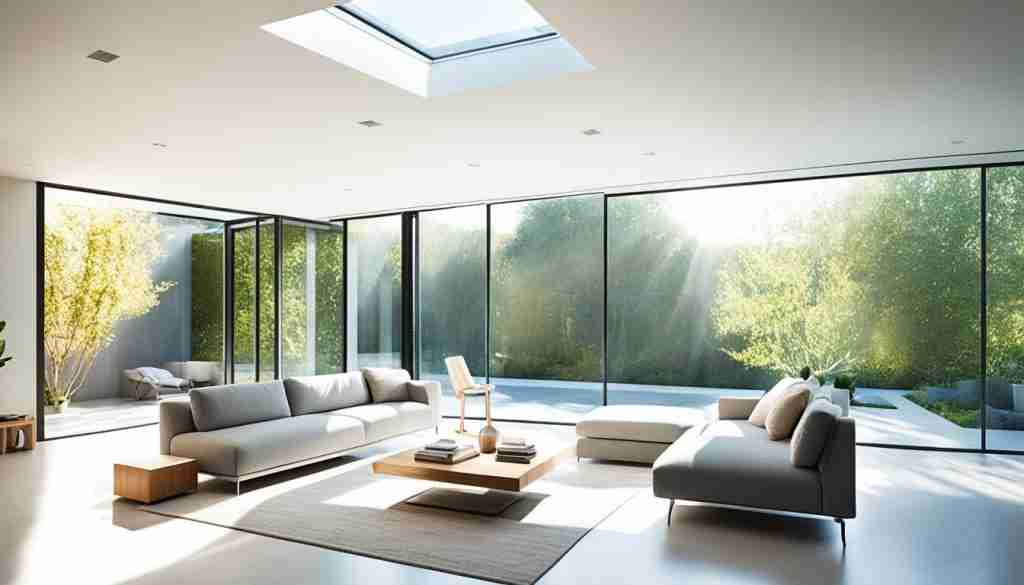
Advantages of Skylights in Daylighting Design
Skylights bring lots of benefits to your home’s lighting. They give you steady light all year, even when it’s cloudy. This means you use less artificial light, saving energy and money.
Being in natural light can make you feel happier and more productive. It also helps you sleep better and stay healthier. When picking skylights, think about their energy-saving features and how they look in your home.
Choosing the right skylights means finding ones that fit your home’s style and needs. A pro can help pick the best size and place for your skylights. This makes your room look and work better.
Sun Tubes for Illuminating Dark Spaces
Sun tubes are great for lighting up dark spots in your home. They work well in places like hallways, bathrooms, or closets. These tubes catch sunlight on the roof and send it down to where you need it, without letting in too much light.
Sun tubes are cheaper and easier to keep up than skylights. They come in different styles to fit around your roof’s shape. You can adjust the light in the room with special diffusers on the sun tubes.
| Feature | Skylights | Sun Tubes |
|---|---|---|
| Light distribution | Wide, direct light | Focused, indirect light |
| Installation | Requires roof modification | Minimal roof modification |
| Cost | Higher initial cost | Lower initial cost |
| Maintenance | Regular cleaning required | Minimal maintenance |
| Light control | Adjustable with shades or blinds | Limited control with diffusers |
Using skylights and sun tubes makes your home brighter and more welcoming. These features not only make your home look better but also save energy and create a healthier living space.
Maximizing Natural Lighting for Energy Savings
To make the most of natural light in your home and save energy, think about your building’s design and orientation. Place windows, skylights, and light wells well to use daylight. This way, you can light up your home without using much artificial light or heating.
Think about how your building faces the sun. Windows and glazing in the right spots catch lots of sunlight. South-facing windows get a lot of winter sun, bringing in light and warmth. North-facing windows give steady light without making it too hot in summer.
Your home’s roof and walls also matter for natural light. Skylights and sun tubes bring daylight deep into your home, cutting down on artificial lighting. When adding skylights, think about the best angle and size to avoid glare.
Utilizing a horizontal window as a light source is noted to be nearly three times more effective than a vertical window.
Open floor plans help natural light spread throughout your home. Fewer walls let daylight go deeper, making your home bright and welcoming. This makes your home feel better and uses less artificial light during the day.
Choosing the right glazing and controls is key for saving energy. Windows with special coatings and frames keep your home comfy and cut energy costs. Blinds, shades, and louvers let you control sunlight, stopping it from getting too hot or bright.
| Strategy | Benefits |
|---|---|
| Building Orientation | Captures optimal sunlight throughout the day |
| Skylights and Sun Tubes | Brings daylight into the heart of the home |
| Open Floor Plans | Allows daylight to penetrate deeper into interior spaces |
| High-Performance Glazing | Regulates heat transfer and improves energy efficiency |
Using these sustainable design ideas can greatly lower your home’s energy use and carbon emissions. Studies show that increasing a building’s lighting factor from 3% to 6% can cut CO2 emissions by 3% a year. Natural lighting is good for the planet and makes your home more comfortable, healthy, and productive.
Implementing Daylighting Strategies in New Construction
Building a new home? Start with daylighting strategies for big energy savings and better sustainability. Think about daylighting early to make a home that saves energy, feels great, and looks good.
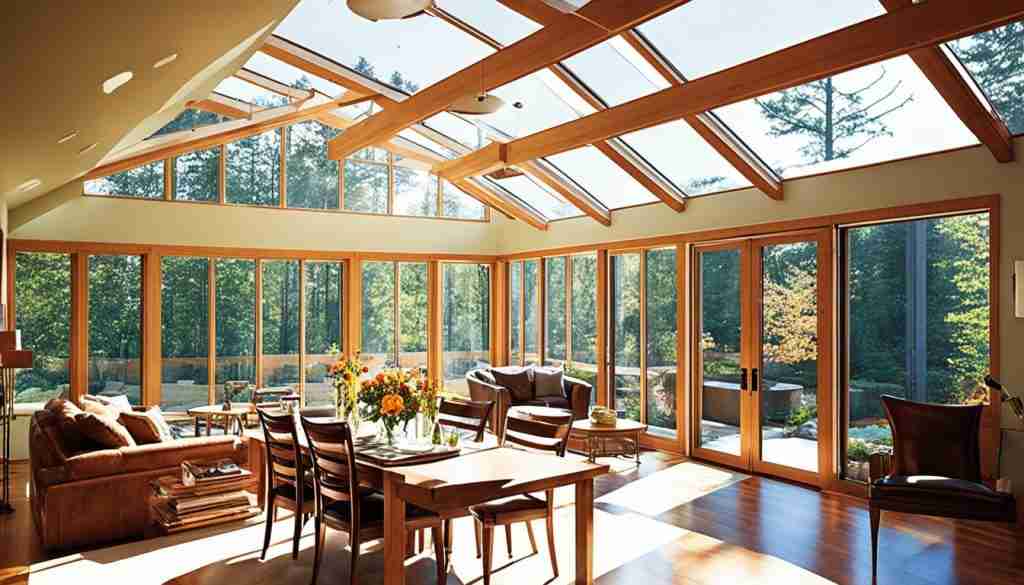
Whole-House Design Approach
Think about every part of your home’s design, like its direction, layout, windows, and finishes. This way, you can use natural light well and use less energy. Daylighting should be part of your home’s design for better function and energy use.
Here are some key points for a whole-house design approach:
- Orient your home to get lots of natural light, with the long side facing south for winter sunlight
- Plan your home’s layout to let natural light go deep inside
- Choose light colors and reflective surfaces to spread light around your home
- Use lights that turn on and off with the daylight to save energy
Passive Solar Home Design Techniques
Passive solar design uses the sun’s energy for heating and lighting your home without machines. This makes your home more energy-efficient and cozy.
Some good passive solar ideas are:
- Place windows to catch sunlight in winter for heat
- Use materials like concrete or brick to store heat from the sun
- Add skylights and sun tubes for more light in deep areas
- Design overhangs or shades to keep out too much summer heat
| Daylighting Strategy | Energy Savings Potential |
|---|---|
| Whole-House Design Approach | Up to 33% of total building energy costs |
| Passive Solar Home Design Techniques | 24% to 80% of lighting energy costs |
| Daylight-Responsive Electric Lighting Controls | Essential for maximizing energy savings |
Using these daylighting strategies in your new home makes it energy-efficient, comfy, and looks great. Let natural light change your home and lessen your environmental impact.
Enhancing Natural Light with Interior Design Elements
Interior design is key to getting more natural light in your home. Using reflective surfaces, light colors, and open floor plans helps a lot. These methods make your home look better and feel bigger. They also cut down on the need for artificial lights, saving energy and helping the planet.
Reflective Surfaces and Light Colors
Reflective surfaces and light colors are great for getting more natural light in. Mirrors are perfect for bouncing light around a room. Place them on walls opposite windows to spread the light further.
Light-colored walls, ceilings, and floors also help reflect and spread light. Using white, cream, or pastel colors makes a room look brighter and bigger, even with little natural light.
The materials you choose for your home also affect light. Glossy finishes reflect light, while matte absorbs it. Mixing reflective and light-colored elements in your design makes your home bright and welcoming.
Open Floor Plans for Light Flow
Open floor plans are great for letting natural light move around. Fewer walls mean more light can get into every corner. This is especially good for homes with few windows or bad light angles.
Open floor plans are popular for their look and how they make spaces feel connected. They let natural light move deeper into your home, making dark areas bright and welcoming.
| Design Element | Impact on Natural Light |
|---|---|
| Mirrors | Reflect and magnify natural light, filtering it to less illuminated areas |
| Light Colors | Reflect and disperse daylight, making rooms feel brighter and more open |
| Glossy Finishes | Help reflect daylight, enhancing its distribution throughout the room |
| Open Floor Plans | Allow natural light to flow freely between living spaces, illuminating deeper areas |
Using these design elements can make your home brighter and more inviting. It also makes it more energy-efficient. The key is to balance window placement, light control, shading, and design to use natural light well and avoid its downsides.
Utilizing Lighting Controls and Automation
Lighting controls and automation make your home use less energy. They use natural light and cut down on artificial light. By using smart lighting systems and thinking about window placement, you can make your home comfy and save energy.
Automated blinds or shades can adjust with the sun. This lets your home get enough daylight and keeps it cool in the summer. Using occupancy sensors is also smart. They turn off lights when no one is in the room, saving energy.
Here are some ways to save energy with lighting:
- Dimmers: Dimmers lower light levels and save energy. CFLs and LED bulbs for dimming are great choices.
- Occupancy sensors: These sensors turn lights on when you enter a room and off when you leave, saving energy.
- Motion sensors: For outdoor lighting, motion sensors turn lights on only when needed, saving energy.
- Photosensors: These sensors know when it’s daylight and stop lights from turning on, saving energy.
- Timers: Timers can set when lights turn on and off, saving energy by controlling when lights are used.
Energy-efficient lighting makes a big difference in energy use and the environment. Here are some facts:
| Statistic | Impact |
|---|---|
| Lighting uses about 10% of energy in commercial buildings (U.S. EIA) | Using efficient lighting can save a lot of energy in businesses |
| LED lighting uses 75% less energy than old bulbs (U.S. DOE) | Switching to LED can greatly cut energy use at home and in businesses |
| Using LED lighting worldwide could save 1,400 terawatt-hours a year by 2030 (IEA) | LED lighting could make a big difference in energy use worldwide |
| Efficient lighting in the U.S. could cut CO2 emissions by 140 million metric tons a year (U.S. EPA) | Using efficient lighting can help fight climate change |
By using energy-efficient lighting, passive solar, and smart controls, you can make a home that’s comfy and good for the planet.
Using lighting controls and automation saves money on electricity and helps the planet. By choosing the right lighting and window setup, you can make your home match the natural world. This reduces your impact on the environment.
Balancing Daylighting with Energy-Efficient Artificial Lighting
Maximizing natural lighting is key for saving energy. But, it’s also vital to use energy-efficient artificial lighting. By mixing daylighting with smart lighting, you can make your home bright, cozy, and green.
Studies show that people like natural and artificial light together in offices and homes. Finding the right mix of both lights makes people happier and more productive. It also helps with green building goals.
LED Lighting for Complementing Natural Light
LED lighting is changing the game in saving energy. It’s set to make up 84% of lighting sales by 2030. LEDs use less energy and can work well with natural light, saving energy and money.
| Lighting Technology | Energy Efficiency | Lifespan |
|---|---|---|
| LED | High | 50,000+ hours |
| CFL | Moderate | 8,000-10,000 hours |
| Incandescent | Low | 1,000-2,000 hours |
LEDs are much better than other lights in saving energy and lasting longer. Switching to LEDs cuts down on energy use and costs. It also means throwing away fewer bulbs.
Occupancy Sensors and Dimming Controls
Occupancy sensors and dimming controls are smart ways to manage light. They adjust artificial light based on the natural light and if a room is used. This saves a lot of energy.
Daylight harvesting, a method that adjusts artificial light levels based on natural light availability, can result in more than a 25% reduction in energy costs and consumption.
Using occupancy sensors and dimming controls helps you use daylight better at home. These systems work with light shelves and reflectors to spread natural light evenly. This makes your home look good and feel comfortable, using less artificial light.
In conclusion, mixing natural and artificial lighting is key for a green, comfy, and affordable home. With LEDs, sensors, and dimmers, you can use natural light well. This supports green building and makes living better and more productive.
Conclusion
Using natural light in your home is smart and good for the planet. It cuts down on energy use and lowers bills. It also makes your home more comfortable.
Strategies like placing windows right, using skylights, and shading can bring in more light. These methods make your home look better and help you feel better too.
When planning your home, think about using natural light more. Pick the right window sizes and colors that reflect light. Use smart lighting controls to mix natural and artificial light well.
This way, you use less artificial light and save on energy costs. Making smart choices helps a lot over time.
Choosing natural light is key for a green home. It lowers your carbon footprint and makes your home feel welcoming. Start by checking how much natural light your home gets.
Then, slowly add the tips from this article. With effort and planning, your home can be bright, save energy, and be good for the planet. It’s great for your health and the planet’s too.

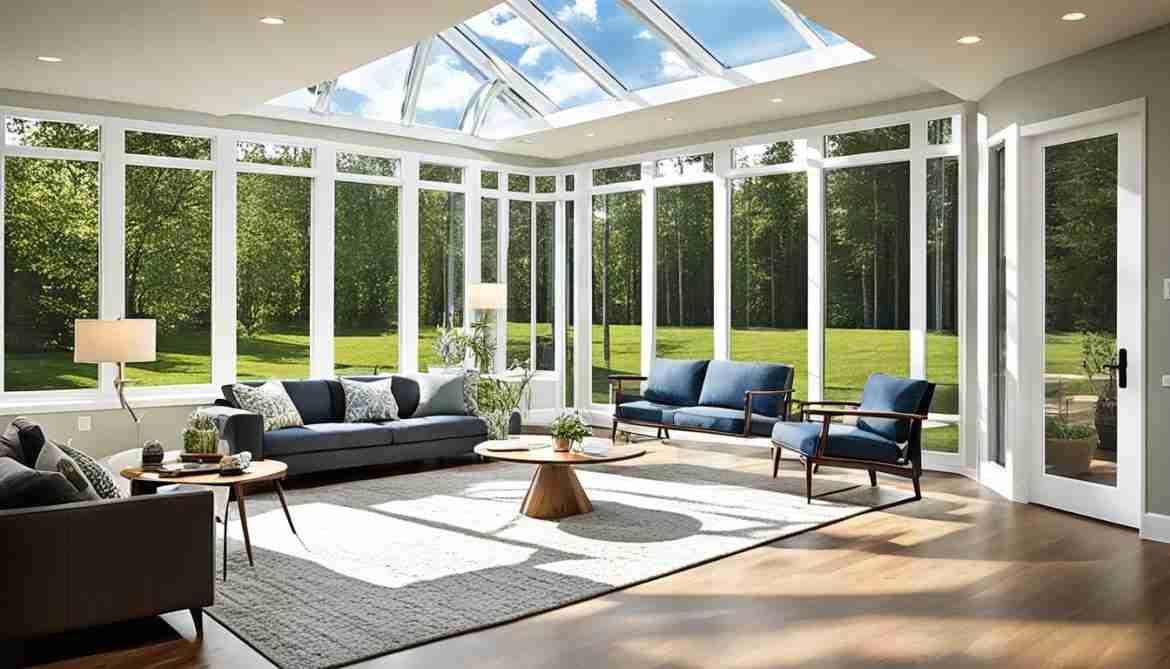
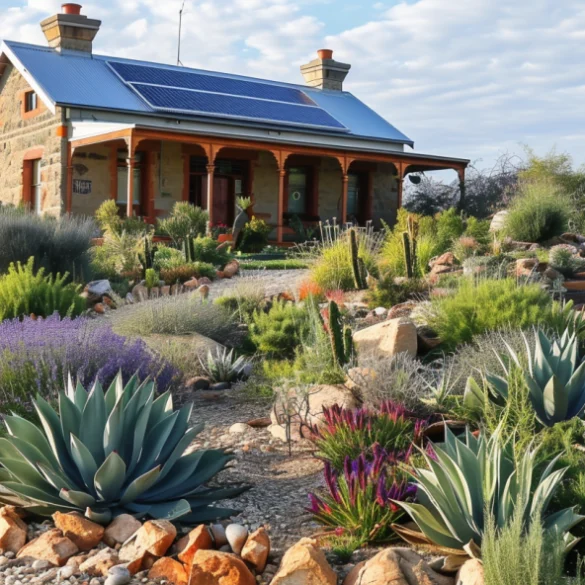
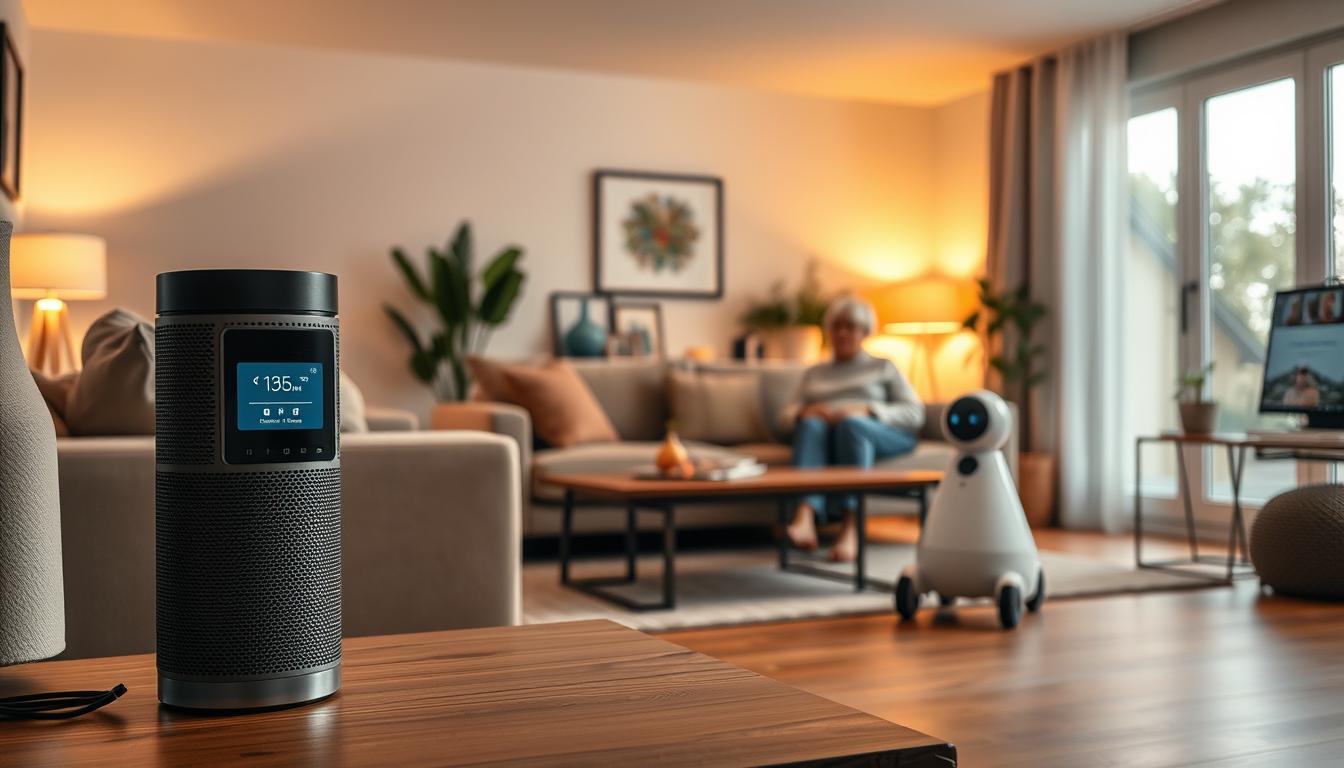
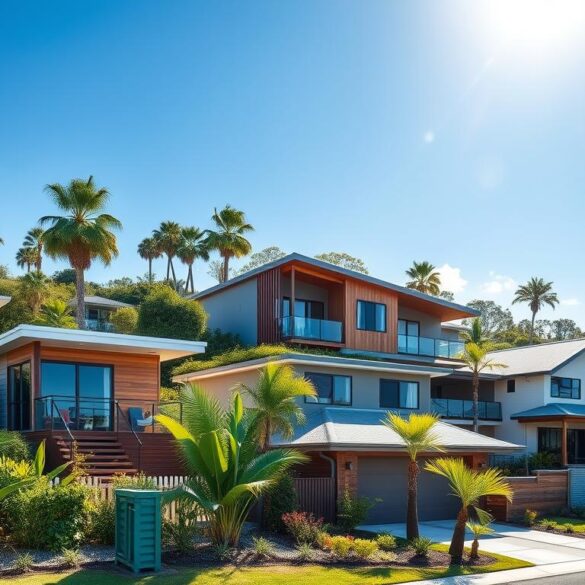
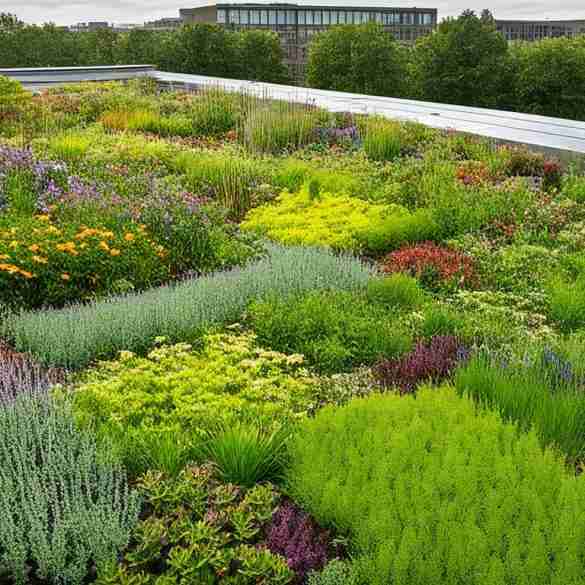
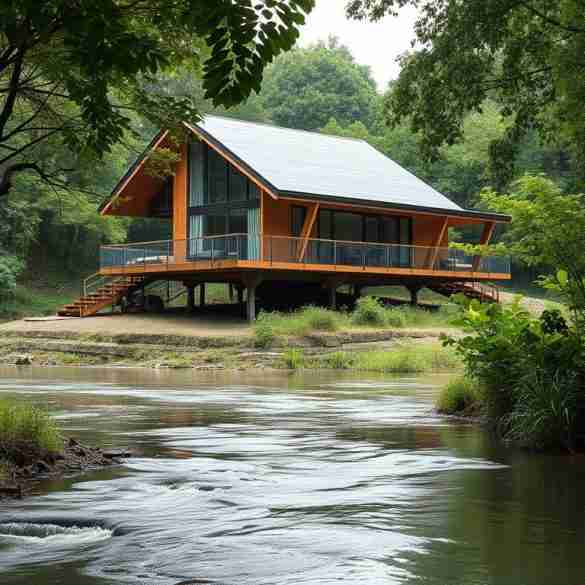
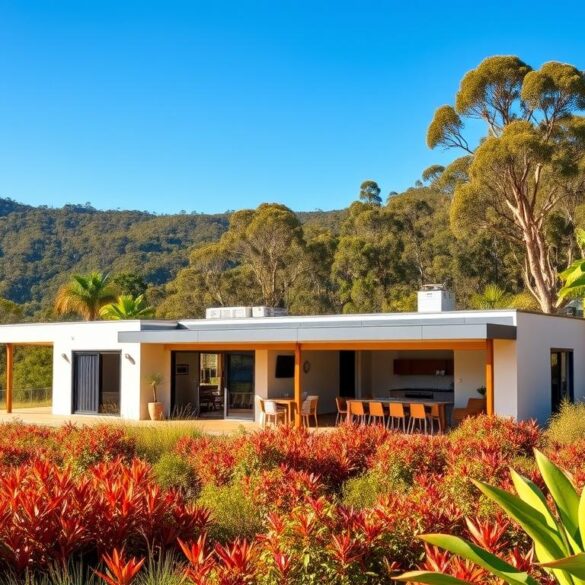
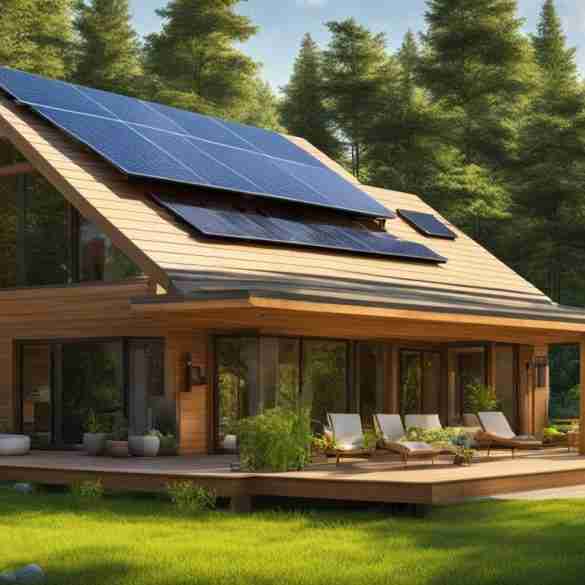
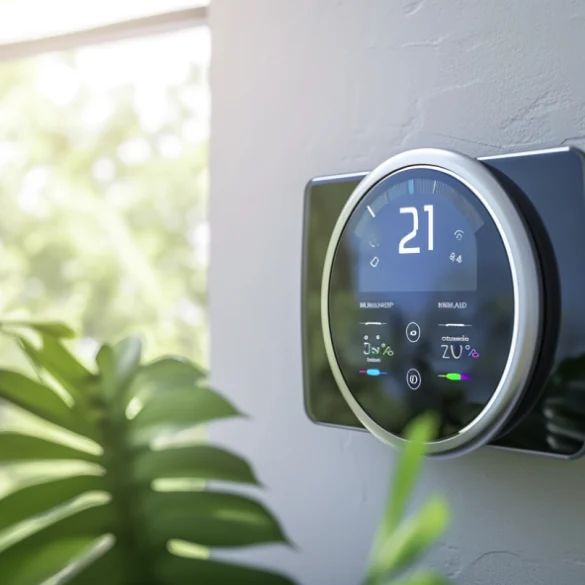
1 comment
[…] insulation and passive solar design keep your home comfortable with less energy. They stop heat from escaping, so you use less heating and cooling. Design your home to get lots of […]